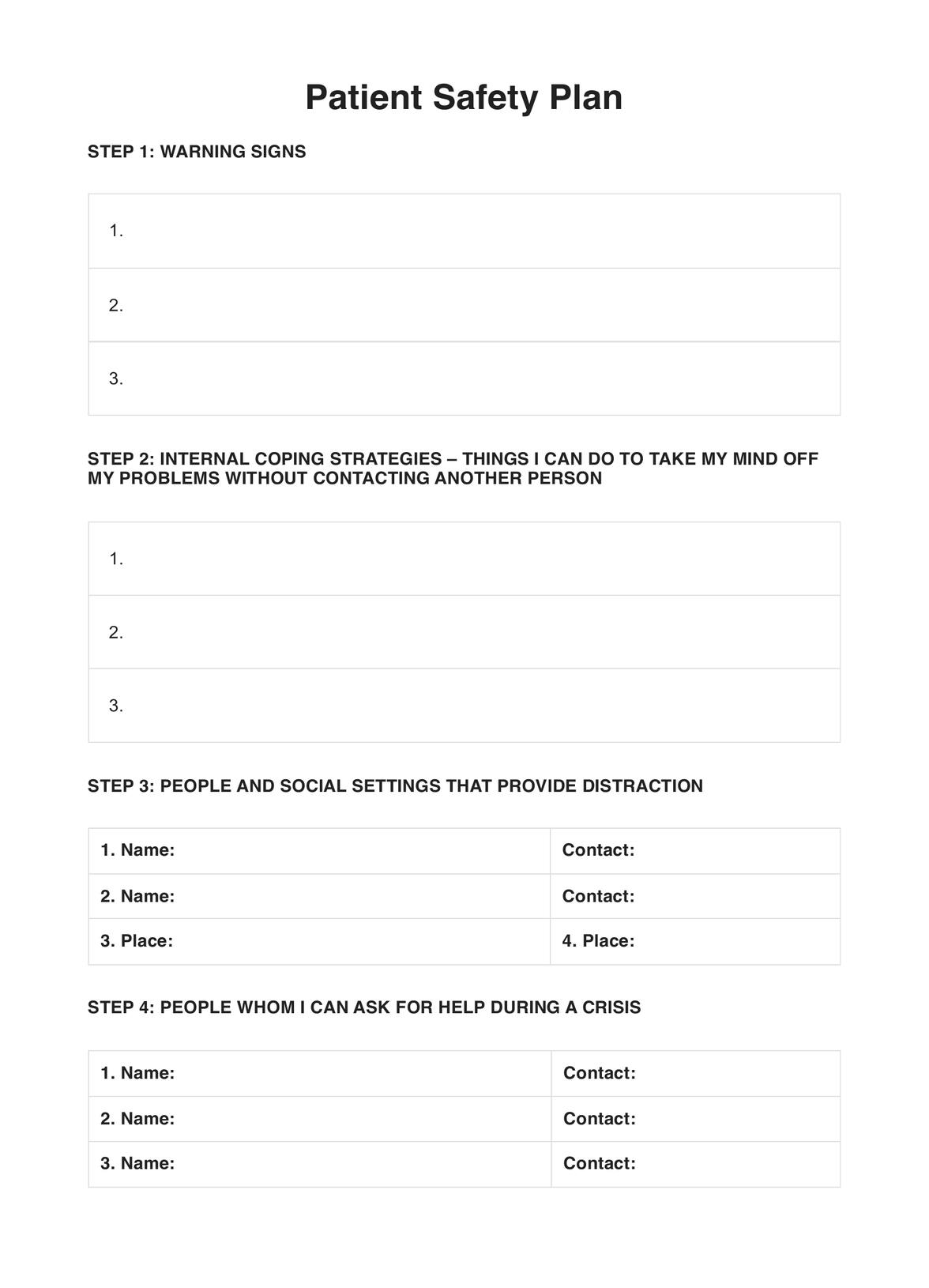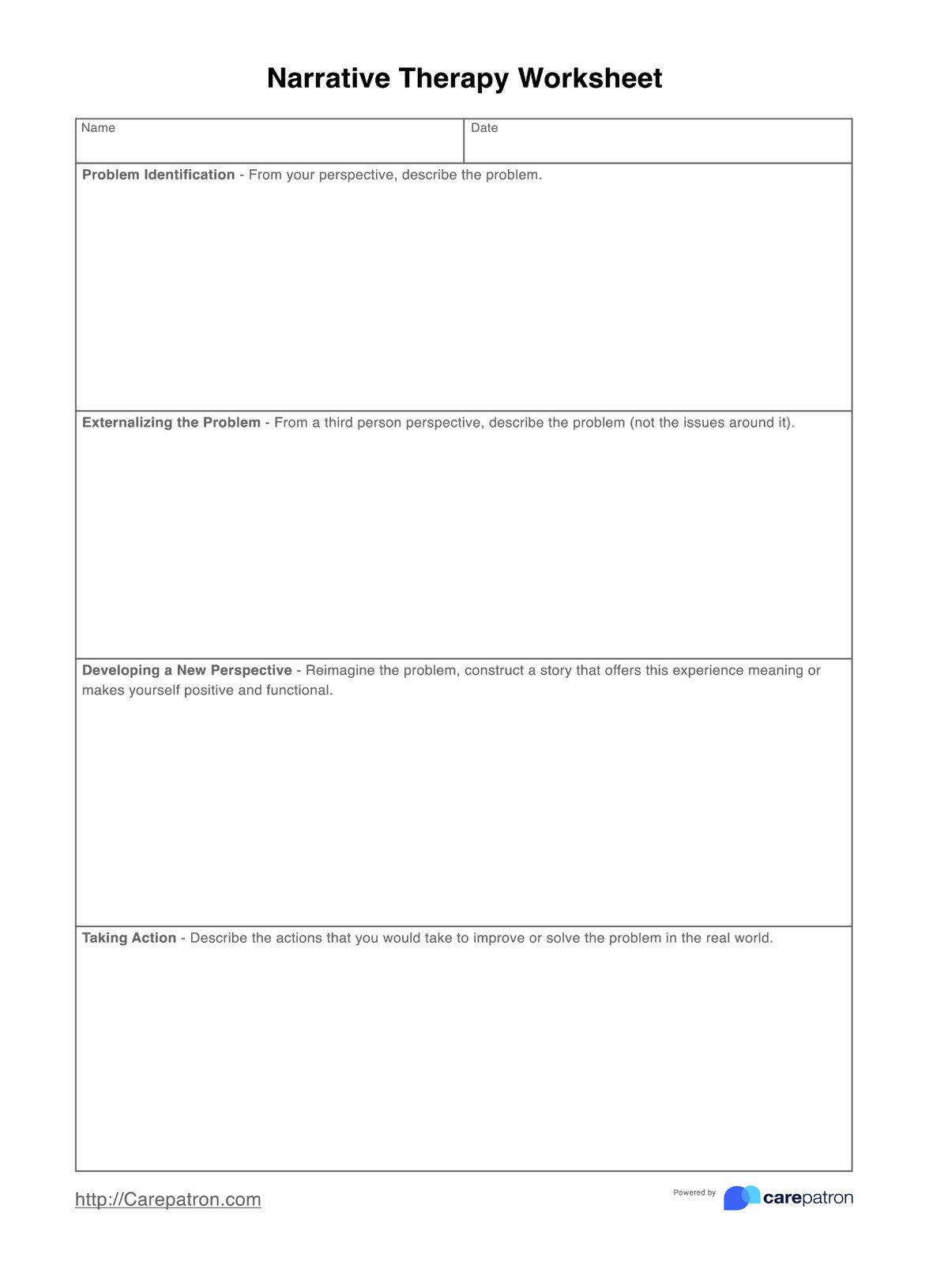Toronto Alexithymia Scale
Use the Toronto Alexithymia Scale (TAS) to measure alexithymia and assess difficulties in recognizing and describing emotions in clinical and research settings.


What is a Toronto Alexithymia Scale?
The Toronto Alexithymia Scale (TAS) is a psychological tool used to measure the level of alexithymia, a personality construct that involves difficulty identifying and describing one's emotions. Alexithymia is often associated with various psychological and physical health problems, making it an important aspect to consider in mental health assessments.
The TAS comprises 20 items, each rated on a five-point Likert scale, and measures three primary facets: difficulty identifying feelings, difficulty describing feelings, and externally-oriented thinking. The scores from these items are summed to create a total alexithymia score. Higher scores on the TAS suggest higher levels of alexithymia, indicating more significant difficulties with emotional awareness and expression.
The TAS is widely used in research and clinical settings due to its strong psychometric properties, reliability, and validity. It allows clinicians and researchers to quantify a person's ability to understand, process, and verbalize their emotions, which can aid in diagnosing and treating various mental health conditions.
To learn more about the Toronto Alexithymia Scale and its application in practice, check out this explainer video.
For healthcare professionals seeking to integrate such psychological tools into their practice, consider using electronic health records. They allow for efficient storage and retrieval of patient information, including results from assessments like the. This can significantly streamline your workflow, improve patient care, and enhance your ability to track progress.
Toronto Alexithymia Scale Template
Toronto Alexithymia Scale Example
How does it work?
The Toronto Alexithymia Scale (TAS) evaluates a person's ability to identify, describe, and externalize emotions. Here's a step-by-step process of how it works:
Step 1: Obtain the Scale
First, you'll need to procure a copy of the TAS. There are printable Toronto Alexithymia Scales available online for easy access and use.
Step 2: Understand the Scale
The TAS consists of 20 questions, divided into three categories: Difficulty Identifying Feelings (DIF), Difficulty Describing Feelings (DDF), and Externally-Oriented Thinking (EOT). Each question is evaluated on a scale of 1 (strongly disagree) to 5 (strongly agree).
Step 3: Answer the Questions
Respond to each item honestly, based on your feelings and experiences. Remember, there are no right or wrong answers. The goal is to assess your ability to understand and convey your emotions accurately.
Step 4: Score the Scale
Each item's score contributes to the total alexithymia score. Items related to DIF, DDF, and EOT are summed separately and combined to form the total alexithymia score. Higher scores indicate higher levels of alexithymia.
Step 5: Interpret the Results
TAS scores range from 20 (no alexithymia) to 100 (high alexithymia). Scores above 61 typically indicate high alexithymia, while scores below 52 suggest no alexithymia. Scores in between are considered borderline.
Step 6: Use the Results
The results can be used to inform treatment plans, monitor progress, or contribute to research. They provide valuable insights into a person's emotional awareness and processing, which are crucial aspects of mental health.
When would you use this Template?
The Toronto Alexithymia Scale (TAS) is a versatile tool that professionals can use in various contexts. Here are some situations where this template would be handy:
Clinical Practice
Psychologists, psychiatrists, and therapists can use the TAS to assess clients' alexithymia levels in clinical settings. This can help identify individuals who struggle with understanding and expressing their emotions, often associated with mental health conditions like depression, anxiety disorders, eating disorders, and post-traumatic stress disorder.
Treatment Planning
The TAS can inform treatment planning. For instance, those with high alexithymia may benefit from therapies focusing on improving emotional awareness and expression, such as emotion-focused therapy or cognitive-behavioral therapy.
Progress Monitoring
The TAS can also be used to monitor progress over time. Repeated administration of the TAS can show whether a client's alexithymia levels are changing in response to therapy, providing valuable feedback about the effectiveness of the treatment approach.
Research Purposes
The TAS can explore relationships between alexithymia and various psychological, physical, and social variables in research contexts. This can contribute to a deeper understanding of how difficulties with emotional processing can impact multiple aspects of human health and well-being.
Medical Settings
Physicians and other healthcare providers might use the TAS to assess patients' emotional processing abilities in medical settings, given that alexithymia has been linked to several physical health conditions, including heart disease and chronic pain conditions.
Benefits
The Toronto Alexithymia Scale (TAS) is a valuable tool for clinical and research settings. Here are some key benefits of using this scale:
Easy Accessibility
The TAS is available online for free, making it easy for professionals to access and use in their practice or research.
Detailed Emotional Assessment
The TAS provides a detailed assessment of an individual's ability to identify and describe emotions, offering valuable insights into their emotional processing capabilities.
Informative for Treatment Planning
Results from the TAS can inform treatment planning by highlighting areas where an individual may need additional support or specific therapeutic interventions.
Progress Monitoring
Repeated use of the TAS can track changes in an individual's alexithymia levels over time, providing a measurable way to monitor progress and the effectiveness of interventions.
Strong Psychometric Properties
The TAS has demonstrated good reliability and validity, making it a reliable tool for assessing alexithymia.
Versatility
The TAS can be used in various settings (clinical, research, medical) and with diverse populations, making it a versatile tool for understanding and exploring emotional processing difficulties.
Research & Evidence
The Toronto Alexithymia Scale (TAS) was first developed in the 1980s by a group of researchers at the University of Toronto. The original version, known as TAS-26, contained 26 items. However, further research and refinement reduced the scale to the current 20-item version, TAS-20, which is now the most widely used measure of alexithymia.
Since its development, the TAS has been the subject of extensive research. Numerous studies have confirmed its reliability and validity across different populations and settings. The three-factor structure of the TAS, which includes Difficulty Identifying Feelings, Difficulty Describing Feelings, and Externally-Oriented Thinking, has been consistently supported by factor analyses.
The TAS has also been translated into many languages and used in cross-cultural research, demonstrating its robustness and applicability across different cultural contexts.
The TAS research has found significant associations between alexithymia and various psychological and physical health conditions, including depression, anxiety, substance use, eating disorders, and chronic pain conditions. This has contributed to our understanding of the role of emotional processing difficulties in these conditions and informed treatment approaches.
Moreover, studies have shown that the TAS can be sensitive to changes over time, making it a valuable tool for monitoring therapy progress or evaluating therapeutic interventions' effectiveness.
References
- APA PsycNet. (n.d.). https://psycnet.apa.org/record/2009-08742-024
- Bagby, R. M., Parker, J. D. A., & Taylor, G. J. (1994). The twenty-item Toronto Alexithymia scale—I. Item selection and cross-validation of the factor structure. Journal of Psychosomatic Research, 38(1), 23–32. https://doi.org/10.1016/0022-3999(94)90005-1
- González-Arias, M., Martínez-Molina, A., Galdames, S., & Urzúa, A. (2018). Psychometric Properties of the 20-Item Toronto Alexithymia Scale in the Chilean Population. Frontiers in Psychology, 9. https://doi.org/10.3389/fpsyg.2018.00963
- Jones, N. E. &. K. (2020). Toronto Alexithymia Scale (TAS-20). Embrace Autism. https://embrace-autism.com/toronto-alexithymia-scale/
- Panaite, V., & Bylsma, L. (2012). Alexithymia. In Elsevier eBooks (pp. 92–99). https://doi.org/10.1016/b978-0-12-375000-6.00018-5
- PhenX Toolkit: Protocols. (n.d.). https://www.phenxtoolkit.org/protocols/view/650901
- Toronto Alexithymia Scale (TAS-20) | Association for Contextual Behavioral Science. (n.d.). https://contextualscience.org/TAS_Measure
- ᐉ Toronto Alexithymia Scale (TAS) - Take the Alexithymia Test Online. (n.d.). https://psycho-tests.com/test/tas
Commonly asked questions
The Toronto Alexithymia Scale (TAS) is used by psychologists, psychiatrists, therapists, researchers, medical professionals, and educators. It helps in assessing a person's ability to identify and describe emotions.
The Toronto Alexithymia Scale (TAS) is used when assessing an individual's ability to identify and describe emotions, often in diagnosing mental health conditions, conducting psychological research, or evaluating emotional processing in medical and educational settings.
The Toronto Alexithymia Scale (TAS) is a self-report questionnaire with 20 items rated on a 5-point Likert scale. It assesses difficulty identifying feelings, describing feelings to others, and externally oriented thinking. Higher scores indicate a greater degree of alexithymia. Clinicians and researchers use it to understand emotional awareness and processing.


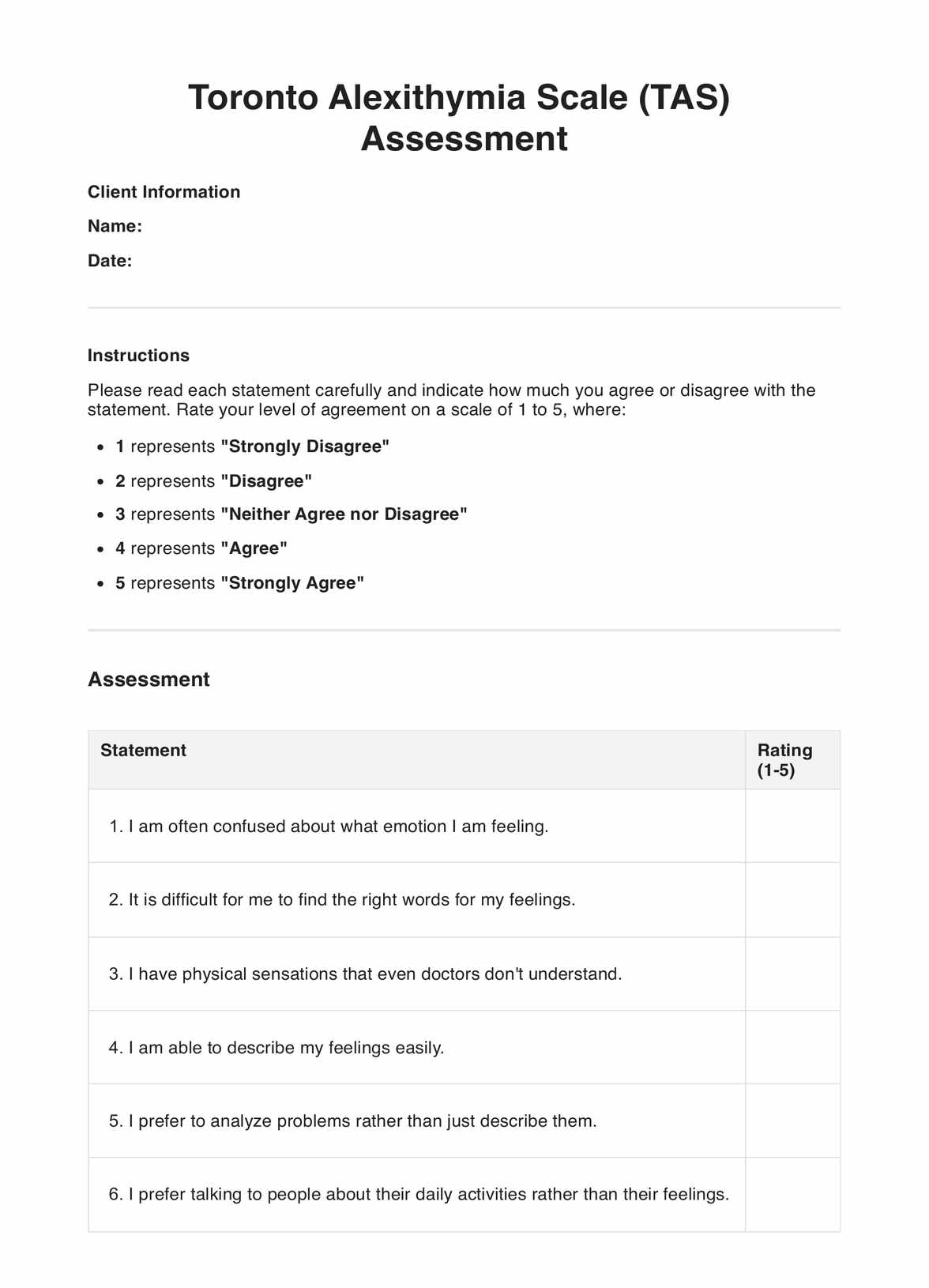
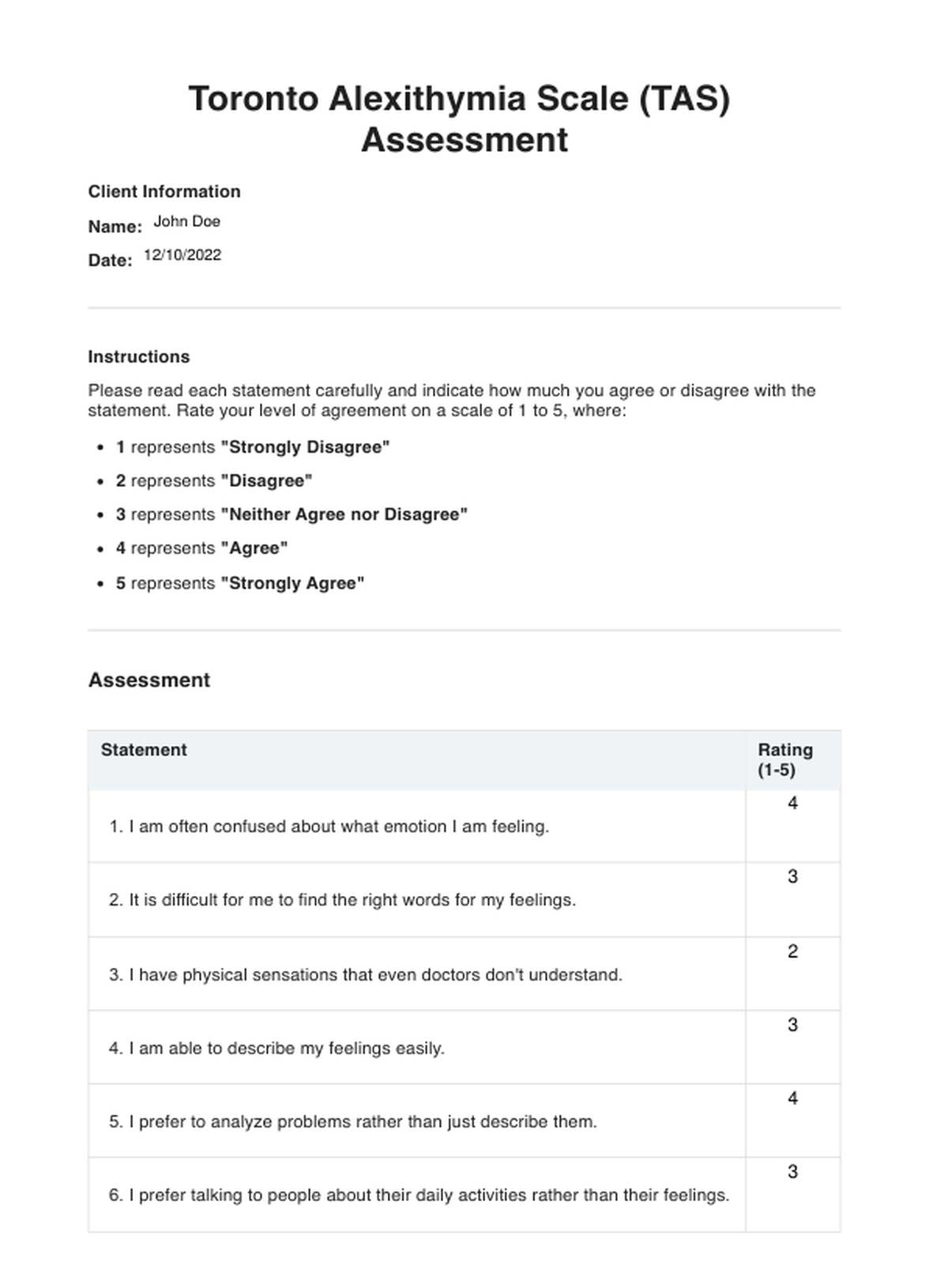

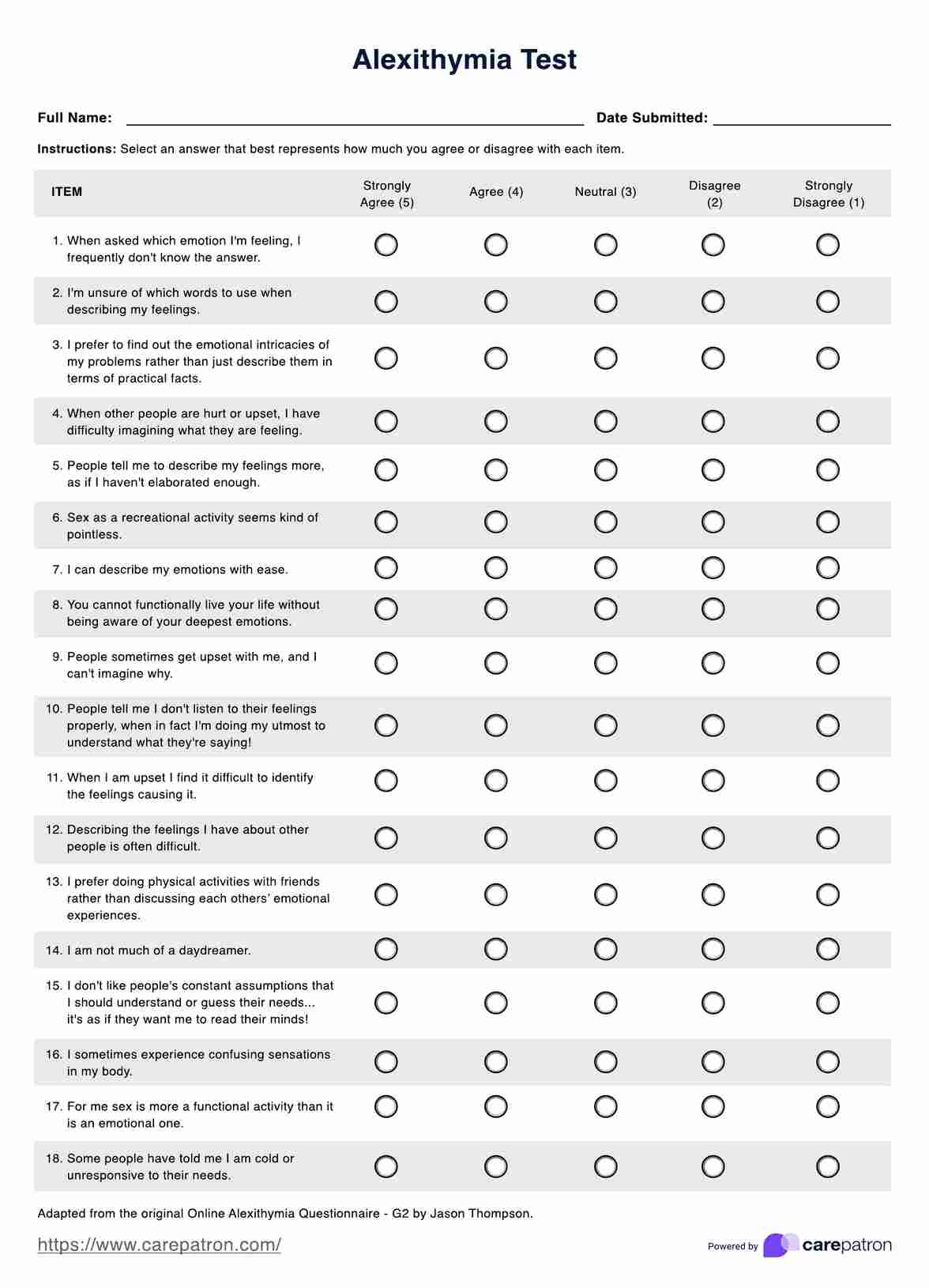












-template.jpg)






























































































